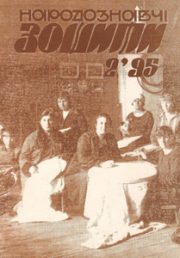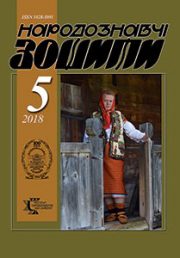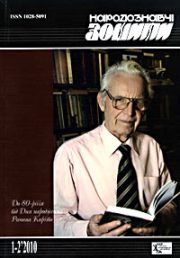The Ethnology Notebooks. 2018, 2 (140), 385—390.
UDK 821 (479. 24)
DOI https://doi.org/10.15407/nz2018.02.385
Received 8.02.2018
THE PUBLICATION OF THE AZERBAIJAN FOLK TALES
Hasanova Valida,
postdoctoral, Institute of Manuscripts named M. Fuzuli;
leading researcher of Research Department.
Azerbaijan National Library, Azerbaijan
Xaqani Kьзəsi 29, Baku 1000, Azerbaijan
Abstrakt. This article briefly reviews the initial development of the Azerbaijani folk tales; in simple explanations are given the establishment of their documentary and information base, as well as their intellectual wealth.
Keywords: Azerbaijani folk tales, fairy tales, Nizami Hiandzhavi, stories, folklore.
REFERENCES
Abbasly, I. (1977). Azerbajdzhanskij fol’klor v armjanskih istochnikah XIX veka. Baku [in Azerbaijan].Ahundov, A. (Ed.). (1970) Azerbajdzhanskie skazki: v 2 vol. (Vol. I). Baku: Azerneshr [in Azerbaijan].Bagrija, A. & Zejnally, H. (perevod, stat’i i kommentarii) & Sokolova Ju. M. (Ed.) (1935). Azerbajdzhanskie tjurkskie skazki. Moskva: Academia [in Russian].Aliev, O. (2001). Pojetika azerbajdzhanskih skazok. Baku: Sada [in Azerbaijan].Alieva-Kengerli, A. (2008). Fol’klor Azerbajdzhana i knizhnaja kul’tura. Baku: Jelm [in Azerbaijan].Zejnally, H. (1936, 29 fevralja). Azerbajdzhanskij fol’klor. Literaturnaja gazeta [in Azerbaijan].Koran. (2004). In Bunijatov Z.M. & Mamedaliev V.M. (perevod na azerbajdzhanskij jazyk). Baku [in Azerbaijan].Seidov, N. (1966). Nekotorye zamechanija o hudozhestvennoj svojstve Azerbaj–dzhanskih skazok (Issledovanija po azerbajdzhanskoj ustnoj narodnoj literature). (Kn. 2, pp. 52—117). Baku [in Azerbaijan].Kozubskij, E. (Ed., sost.). (1895). Ukazatel’ k I—XX vypuskam’ «Sbornika materialov dlja opisanija mest-nostej i plemen’ Kavkaza» 1881—1894 g. Tiflis [in Russian].Halisbejli, T. (1991). Nizami Gjandzhevi i azerbajdzhanskie istochniki. Baku: Azerneshr [in Azerbaijan].Halisbejli, T. (1990). Nizami Gjandzhevi i azerbajdzhanskij fol’klor: po pojeme «Iskandername». Baku [in Azerbaijan].Retrieved from: https://cloud.mail.ru/public/a475452ef22a/%D0%A1%D0%9C% D0%9E%D0%9 C%D0%9F%D0%9A_1883_03.pdf.Retrieved from: https://cloud.mail.ru/public/e92505927fa4/ %D0%A1%D0%9C%D0%9E%D0%9 C%D0%9F%D0%9A_1889_07.pdf.Retrieved from: https://cloud.mail.ru/public/e92505927fa4/ %D0%A1%D0%9C%D0%9E%D0%9C%D0%9F%D0%9A_1889_07.pdf.






